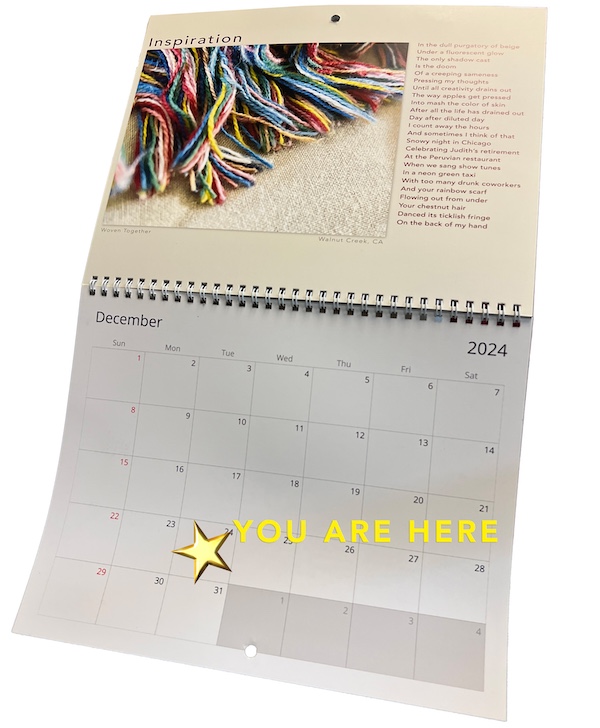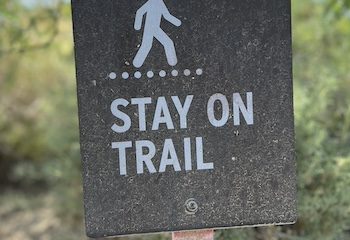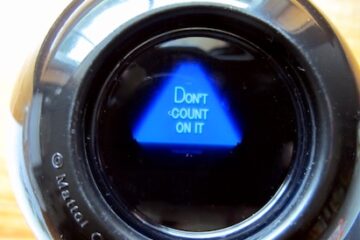Embracing “Left Undone” as a status
It’s almost the end of the year. It’s a time not just for family, gratitude, and cookies but also for reflection, introspection, and irrationally harsh self-judgment.
Last year at this time, I created a bunch of aspirations for 2024. Maybe you did, too. I’m now looking back at those aspirations and comparing that list to what actually happened.
There are a lot of things left undone. And I think that’s wonderful!
Don’t get me wrong. I know from my 2024 activity log that I accomplished an amazing amount of really impressive stuff. And I am going to take time at New Year’s to reflect on that and celebrate it all. But there’s also quite a lot that will be left undone when the calendar turns.

Intentionally have some things left undone
Yesterday morning in a coaching session, a client who was struggling with the guilt of having things left undone at the end of every day asked me how I manage my daily task lists and how I make sure I get everything done.
My answer: I don’t get everything done. If I don’t have some things left undone when I end my day, then I didn’t dream big enough that day.
I think this may be one reason I rarely feel disappointed in my own performance. For years, I’ve made a daily practice of intentionally setting expectations higher than my reach, and intentionally ending every day with things left undone.
Disappointment has no place in a system where left undone is not considered failure. Left undone is simply a fact, with no morality or judgment attached. There may be consequences to face, but my character and value as a person are not in question.
All that said, this system only really works if you’re very clear about prioritization and the need for having effective long-, medium-, and short-term visions.
How I manage my schedules
I’ve found that describing how I manage my own time has been surprisingly helpful for many of my clients. My solutions are my solutions, of course; you need to find the solutions that work for you. Maybe mine will, or maybe they’ll inspire you to create something new.
I am not a fan of over-engineering a process. I don’t use fancy productivity tools. I don’t follow a branded time-blocking methodology or know the names of the famous productivity gurus. I’m also neurotypical, so I don’t claim these methods are designed with accessibility in mind. They’re methods I designed that work for me. With all that in mind, here’s how I do it:
I keep three to-do lists, all within a single text document. (I use the Pages app on Apple products, if you care.) I keep this document open all the time and use it both as my priority manager and my activity log. All my lists are simply nested bullet lists with some naming conventions and color coding added.
The Big Picture list
At the very top of the file I keep my Big Picture list. This list contains all my big projects, each of which is complex enough to have its own project plan. These are things like
- Move LLC from California to Oregon
- Publish RELIT
- Create writing workshop for the healing power of writing
- Recruit speakers for Self-Publishing track at the 2025 San Francisco Writers Conference
I refer to this list periodically to make sure I’m not forgetting something important over the horizon, and to make sure I’m keeping on track with the short-term deliverables that are required for the long-term success of each of these endeavors.
For example, in July, knowing that RELIT’s publication date was set for November 13th helped me prioritize editing the drafts of each contributor’s chapters. Even though November 13th was a long way away, I knew if I didn’t put “edit Larry’s chapter” on my To Do Today list, everything else might slip and put that November 13th goal in jeopardy.
I try to keep the Big Picture list to a single page because it’s meant to be a quick-glance reminder, not a project planner. If it threatens to grow beyond a page, I simplify it and move some of the detail that’s built up into a separate project plan document for that Big Picture item. Publication of RELIT had several such project plan documents—one for editing, one for production, one for marketing, one for launch day, etc.
The Do It Someday list
Below the Big Picture list, on page two of my document, I keep a list of random tasks that have no specific deadline, don’t feed into a major project, or which are far into the future but could get done at any time. Examples of these items might be
- Renew car registration before December 12
- Apply to book awards for RELIT (see deadline list)
- Update testimonials page on GBC website
These are tasks that, when I am feeling tapped out or when I have a small amount of down time between clients, I can accomplish relatively easily. They don’t have high enough priority to get onto my To Do Today list, but they are things I want or need to get done someday.
The To Do Today list and Activity Log
The rest of the file, which as of December 23rd is 73 pages long for 2024, is a combination today’s priority to-do list followed by a log of all the things I’ve done this year. (I’ve written about this before.)
Each morning, my first official work task is to go to the top of page three of my document, write today’s date, and then copy all the things left undone from yesterday under the date. This is the beginning of today’s to-do list. I review it, add anything new that has to happen today, and reorder it in priority with the highest priority items at the top.
I keep today’s to-do items in a red font and use an open circle bullet. For example, today might look like this:
Tuesday December 24
- SFWC: Reach out to speakers for self-pub track
- BLOG: finish, publish, and amplify
- Estimate taxes, calculate IRA contribution
- 2025 Calendar: Finalize and post for sale in GBP shop
To make things a little more trackable at a glance, I use a simple naming convention. Each line related to activity for the book RELIT, for example, begins with RELIT. Items related to this weekly blog start with BLOG. Things unrelated to a specific task just float out on their own.
Immediately below the last item on today’s to-do list, I add today’s completed items in black font with a standard bullet. Throughout the day, each thing I accomplish (both the small things and the significant things) goes on this activity log, and when I’ve finished something from the to-do list, I delete it from there.
Tuesday December 24
- SFWC: Reach out to speakers for self-pub track
- Estimate taxes, calculate IRA contribution
- 2025 Calendar: Finalize and post for sale in GBP shop
- RELIT: Replied to Paul about the podcast
- CSC: Facilitated writing workshop
- BLOG: published and amplified to social accounts
When I think of new things to do (e.g., follow up a call with an email later in the day), I’ll add it to the red to-do list so I don’t get derailed by this new idea, and also so I don’t forget to do it at some point.
And of course I use my calendar
In addition to these lists, I use my calendar for dated items such as when invoices are due. When I get to that day, I see the calendar item and add that task to today’s to-do list. This helps me put future tasks out of my mind until they need to get done, letting me concentrate on what’s higher priority today.
What I do with the things left undone
Some tasks on my To Do Today list keep getting rolled over from day to day to day. I periodically review these and either delete them (I’m never going to do them), continue to be at peace with them being left undone, or move them to the Do It Someday list.
A real example of this right now is “RELIT: design a companion wellness journal.” I still want and intend to do that, but it’s not a high enough priority to do today. It should get moved to the Do It Someday list, I suppose.
But even if I go to my grave with that task left undone, still on my to-do list, I’ll be okay with that.
I hope when my life ends, I will depart with a number of things left undone. That will mean that I didn’t dream smaller than I was capable of.
Free consultation
Looking for more fulfillment, joy, or direction in your life? Want to be a more courageous leader? Contemplating a career change? Have a book in you that you need to write?
I can help. Schedule a free coaching session now.
Figure out your core values for free
This simple worksheet helps identify your core values. Many of my clients find it surprisingly eye-opening, and it’s helped people make some big life decisions. Get it here.
Download my chapter from RELIT free
Compassion fatigue can hit anyone in a caring role. RELIT: How to Rekindle Yourself in the Darkness of Compassion Fatigue provides practical, relevant, actionable advice on avoiding and overcoming compassion fatigue and caregiver burnout. Seventeen different experts from a variety of backgrounds, cultures, and professions tell their personal stories and share their hard-earned wisdom in this book that’s been called a “must-read for anyone in a caring role.”
Download my chapter for free, entitled Show up. Try hard. Be nice. Professional coaches who regularly help other people work through their life and work traumas must pay close attention to self-regulation and our own personal resilience, or we can easily get burned out.
My chapter, based on my own experience with compassion fatigue for the first time, explains the things I do to stay centered, stay focused, and bring my “A Game” to every single client, every time.




1 Comment
How to quiet your high achiever guilt - Gray Bear Coaching · June 3, 2025 at 8:41 am
[…] result is that I have embraced the idea of having things left undone at the end of every day. Another is that I have let some things go from my life. I think I’ve […]